She’s so unusual. Cyndi Lauper said it best.
When I say, “I’m reviewing a pair of headphones from a longstanding, well-respected, German headphone company,” what’s the first company you think of? No, not Sennheiser. Nope. Not Beyerdynamic either.
Somehow ULTRASONE remains one of the big players but exists just below the radar. “Innovation from Bavaria” is their slogan, which at first glance seems somewhat counter to their relatively common appearing designs.
Yet, ULTRASONE’s products are controversial. People seem to love or hate them, and they are certainly not as widely discussed as their countryfolk’s contemporaries. German-made products are typically the definition of ‘well-crafted’ and ‘high-quality.’ So why do North American headphone enthusiasts not give ULTRASONE’s creations as much widespread love as they do for the Beyerdynamic and Sennheiser products?
- Look great on the head.
- Lightweight but strong design.
- Comfortable for long listening sessions.
- Enjoyable sound at lower volumes letting you concentrate on work.
- Good passive noise reduction.
- Wide, warm, and deep sound.
- Sirius Bluetooth module works well and is a perfect match.
- Pricey especially when adding Sirius.
- Adhesive mounted pads ripped on first try at removal.
- Upper bass thickness may not appeal to all.
- Undamped cups and plastic cable transmit too much microphonic noise.
- Sirius has a proprietary and short charging cable.
- Sirius is only Bluetooth 4.1 with maximum aptX support.
It turns out the folks at ULTRASONE are rebels. They follow the beat of their own drum. They aren’t going to bow to the rule of the Empire. Not content to make safe, conventional, and boring old headphones, they infuse their products with their unique brand of technology and tuning. Take that, Vader!
And here is where we meet the S-Logic fans and the detractors. S-Logic is ULTRASONE’s proprietary tuning design, updated and refined over the years, that is intended to mimic the binaural sound heard from speakers. They do this by repositioning the drivers to spread the sound out over the outer ear, rather than focusing the sound directly down the ear canal.
Some listeners love this sort of simulated surround sound effect. Some report that it makes the headphones sound unnatural and congested. As often in the world of headphones, controversy abounds!
So, it is with great interest that I approached listening to the Performance 880. This model has been around for a few years (initially released in 2014), but you likely haven’t paid a lot of attention to them if you are like me. They sit at the top of the Performance series, above the 860 and 840, differentiated by color and by the driver material coating.
The 880 have titanium-colored metal highlights, while the 860 are black, and the 840 have red highlights. The 880 drivers are (in fact) coated in titanium, while the 860 are gold coated and the 840 have no coating at all. Users report that the 880 are the most balanced sounding of the triplets, with the 860 more mid-treble focused and the 840 are the bass-heavy models.
Additionally, this series offers a clip-on Bluetooth module, called the Sirius, that eliminates the cable and converts them to wireless. ULTRASONE was generous enough to include this for review as well, and as it turns out, I’m happy they did.
Shall we find out why together?
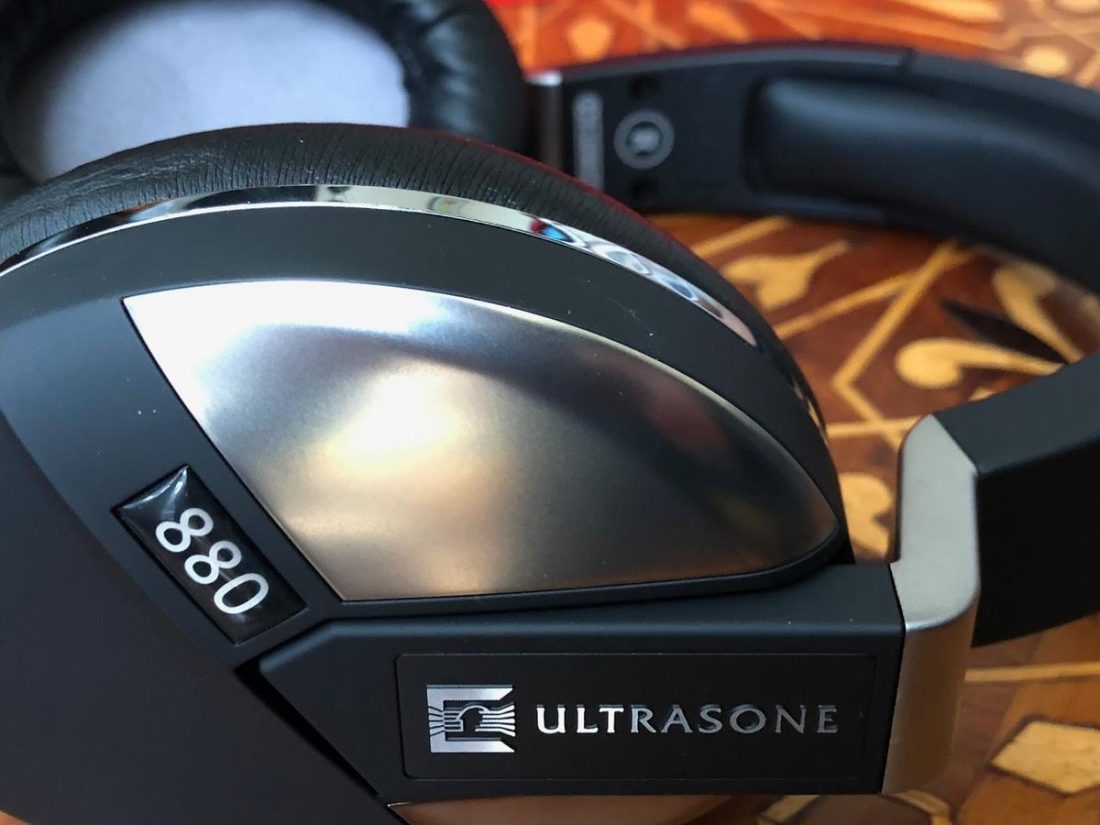
Company Overview
Florian M. König founded ULTRASONE AG in 1990. The objective was to manufacture advanced headphones specializing in professional audio. As such, they produced many headphones for studio, DJ and home use. While headquartered in Bavaria, Germany, the company has manufacturing facilities in Germany and Taiwan.
In addition to their patented S-Logic sound tuning, achieved by non-traditional transducer placement, ULTRASONE claims that their headphones reduce the risk of hearing damage. Accomplished with more efficient driver technology and earcups shielded to reduce electromagnetic radiation by up to 98 percent compared to other headphones.
ULTRASONE is committed to responsible and sustainable business practices and powers their Bavaria based manufacturing plant with a solar power system, uses electric cars for the company fleet, selects environmentally sustainable materials and components, utilizes short delivery routes, and chooses climate-neutral partners.
Technical Specifications
- Price: $499 USD (Performance 880) + $169 USD (Sirius Bluetooth)
- Form: Over-Ear, Closed Back
- Drivers: 40mm, PET membrane, gold-plated, magnet NdFeB
- Impedance (Ohm): 32
- Sensitivity (dB): 94
- Frequency Response: 7 Hz – 35 kHz
- Removable Cable: Y
- Source Plug: 3.5mm
- Cup Plug: locking 2.5mm
- Bluetooth Audio Codec: aptX, AAC, SBC
- Battery Life (hrs): 8-12
- Bluetooth Version: Bluetooth 4.1
- Mic: Y
- IPX: N
- Weight: 274g (excluding cable)
- Additional Features: S-Logic™ PLUS technology, Natural Surround Sound, ULE technology, MU metal shielding, Reduced radiation according to ULE specifications
Packaging
The ULTRASONE products are housed in high-quality, eye-catching, grey and orange, slip-off boxes. Rather than a simple foam cutout, the 880 are contained in a neoprene case with the included accessories.
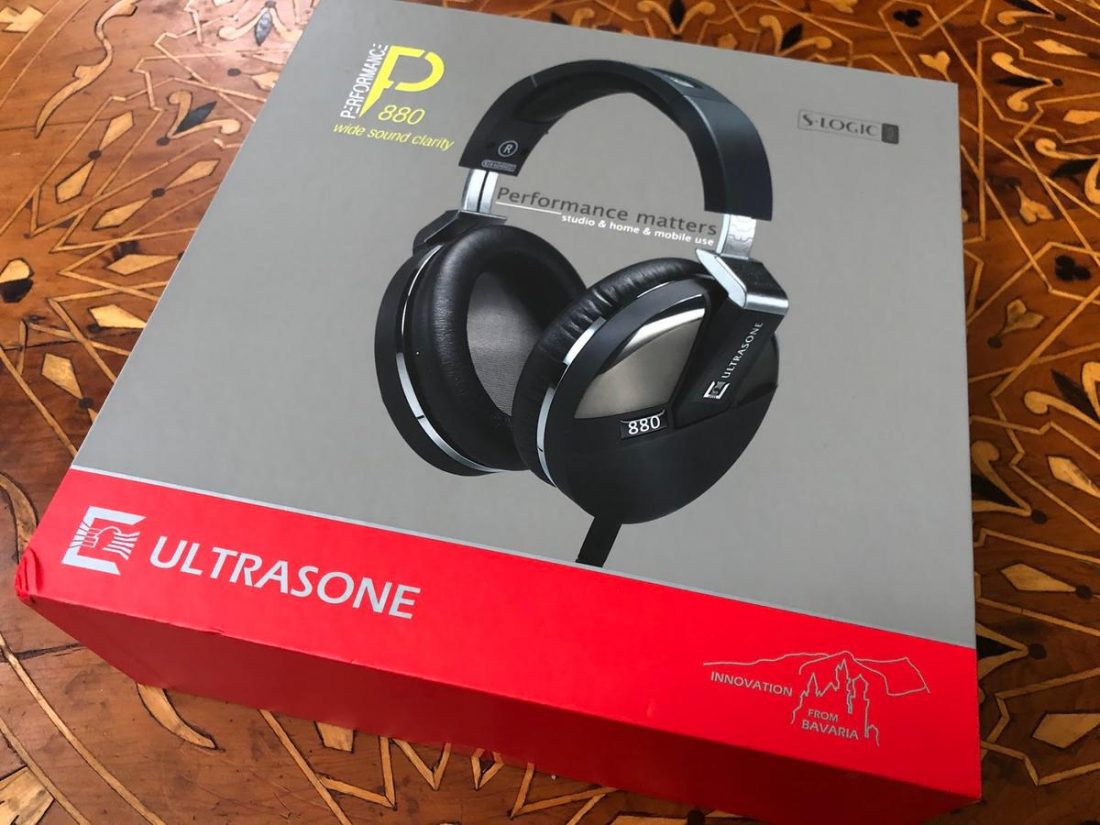
The Sirius is packaged in a similar (but appropriately sized) smaller cardboard box with a foam-lined interior, perfectly cut to fit the Bluetooth module and charging cable.
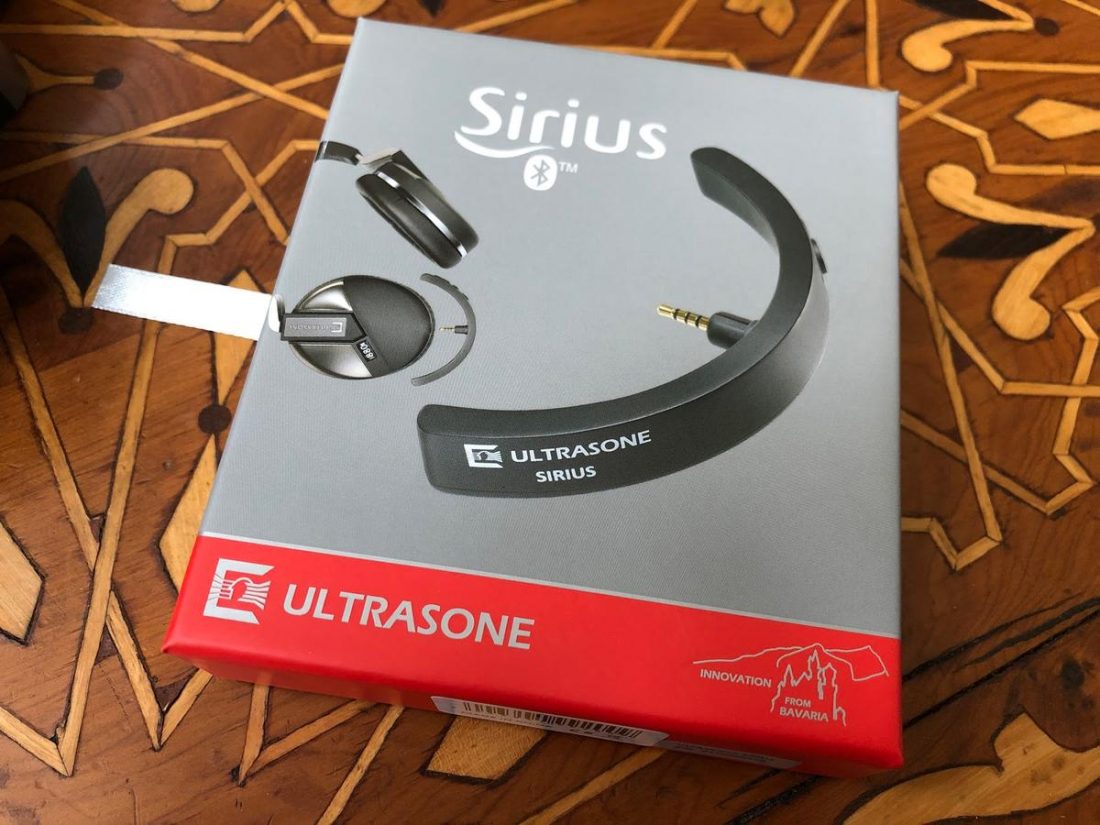
In the box
- Performance 880 headphones
- Black plastic 3.5mm TRS to 2.5mm locking cable. (300 cm)
- Thin, silver weave cable with an inline microphone and remote, 90-degree metal 3.5 TRS to 2.5mm locking cable. (120 cm)
- 6.35 to 3.5mm screw-on adapter.
- Protein-leather ear pads (installed).
- Velour ear pads.
- Neoprene travel and storage case.
- Manual
- Sirius Bluetooth adapter
- Proprietary charging cable – USB A to 2.5mm socket. (15 cm)
- Manual
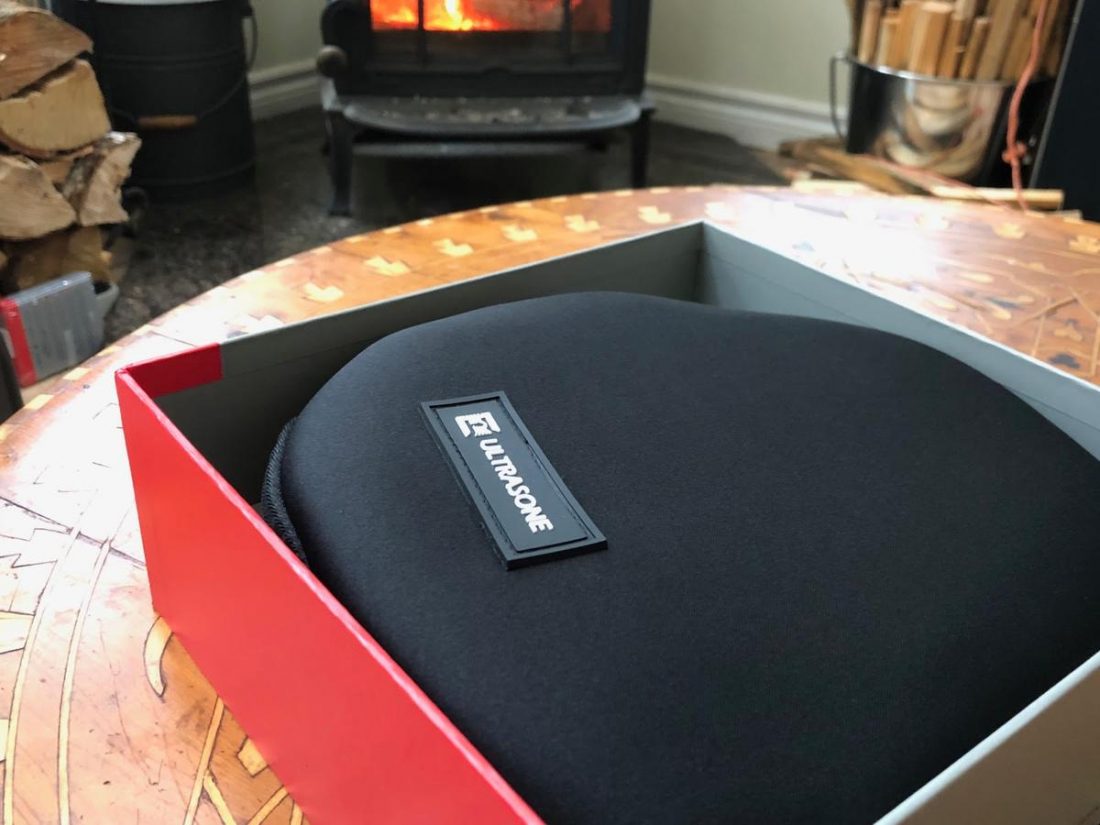
It’s a pretty decent included accessory package. I always appreciate it when companies include a couple of different options for ear pads. However, it’s the ear pads that bring us to my first concern with the 880.
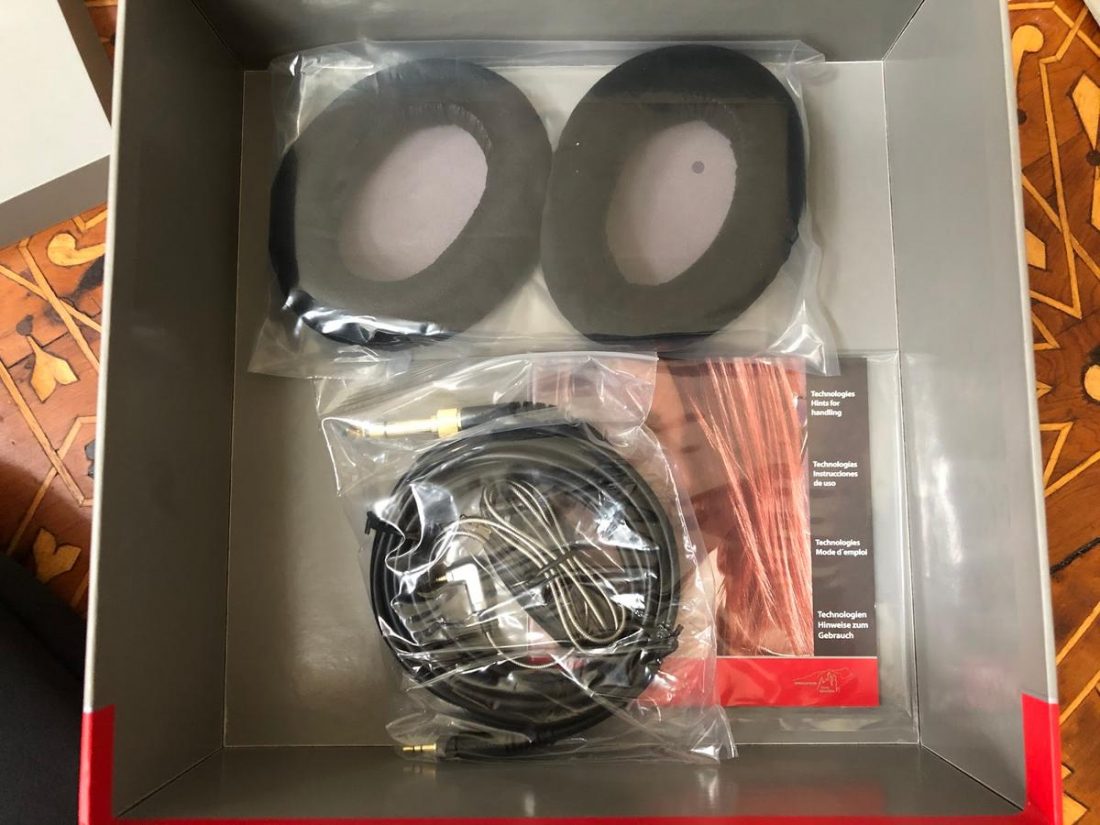
Ear pads
I typically prefer velour and fabric ear pads over simulated leather due to heat and comfort issues. I will always listen to (and measure) both types and check how they affect the sound. I think it’s fair to assume that if a headphone comes with more than one pair of ear pads, they intend you to remove and replace them.
Some enterprising companies use magnets to attach ear pads to the cups, others fit the pads into a groove, and (a very few) use adhesive. I imagine that the 880’s design team presentation was along the lines of, “well, we couldn’t be bothered to find an elegant solution, so let’s just stick ‘em on there.”
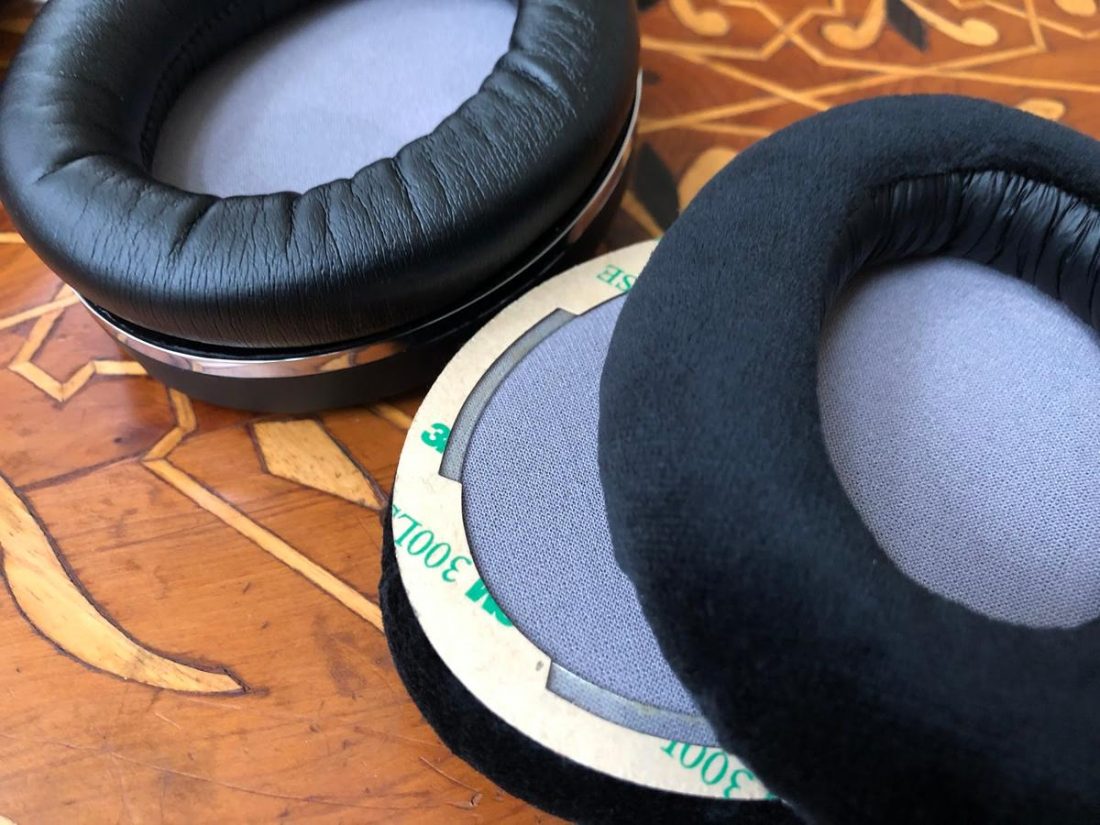
The 880 ear pads have 3M adhesive on the underside in a ring. Like most tape, you peel off the protective layer, exposing the sticky stuff, and pop them in place. Installation is a breeze.
However, removal proves to be much trickier. Disproving the notion of ‘any idiot should be able to peel them off,’ this idiot managed to separate the pleather cushion from the ring at the bottom of one of the pads without managing to remove it from the ear cup. Once I discovered that I was peeling off the wrong thing, I removed the other side without issue.
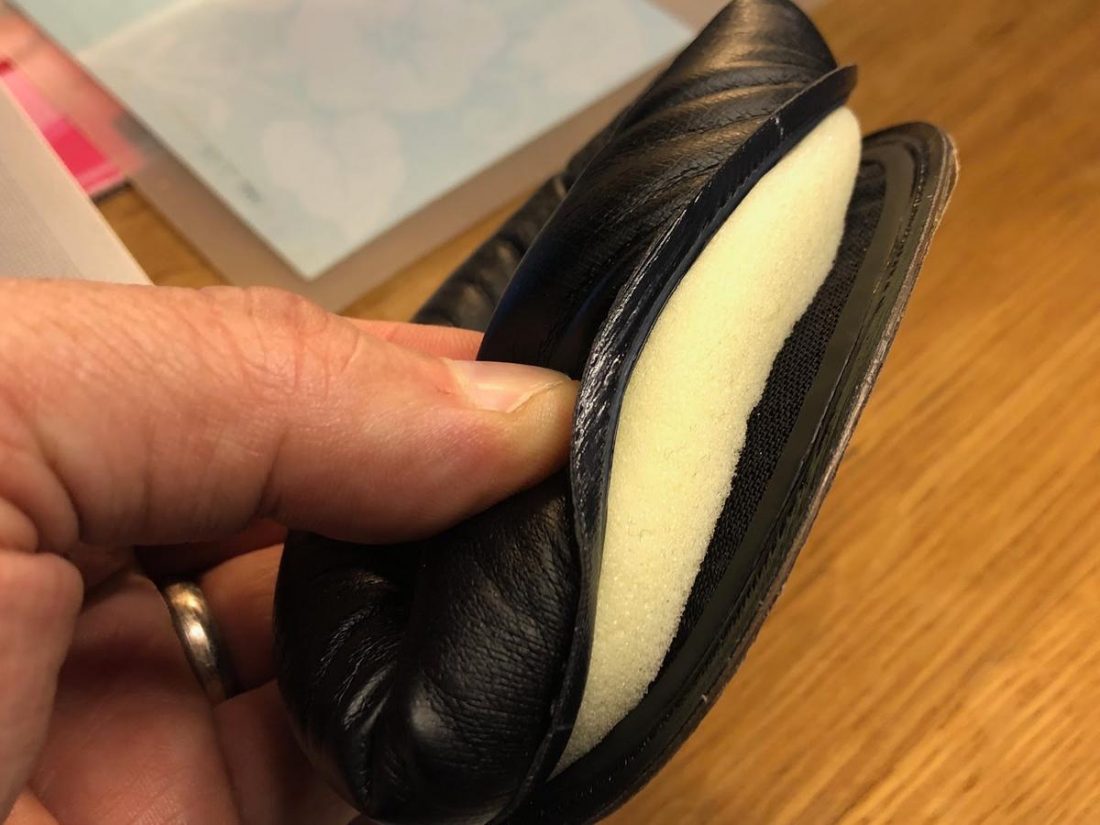
Additionally, now I have sticky pads freed from the cups. What if I want to keep them and put them back on someday? I used the backing that I peeled from the new pads and rather messily stuck that to the old pad’s adhesive to cover it.
Seriously, this is FAR from an ideal design, and I expect better solutions from an innovative company like ULTRASONE.
Cable
To be fair, six years ago when the 880 debuted, cables seemed to be less of a big deal than they are today. There was less talk of braids, exotic materials, and overall bling factor. The included cables with the 880 are fine, but not inspired by today’s standards.
The long (3m) black plastic cable is just that. Long. Black. Plastic. It is terminated on one side with a gold 3.5mm plug with a screw-on 6.35mm adapter. The ear cup side features a proprietary locking 2.5mm TRS plug, which, with strain relief, is a bit longer than it needs to be and runs the risk of rubbing on shoulders or clothing when wearing the headphones.
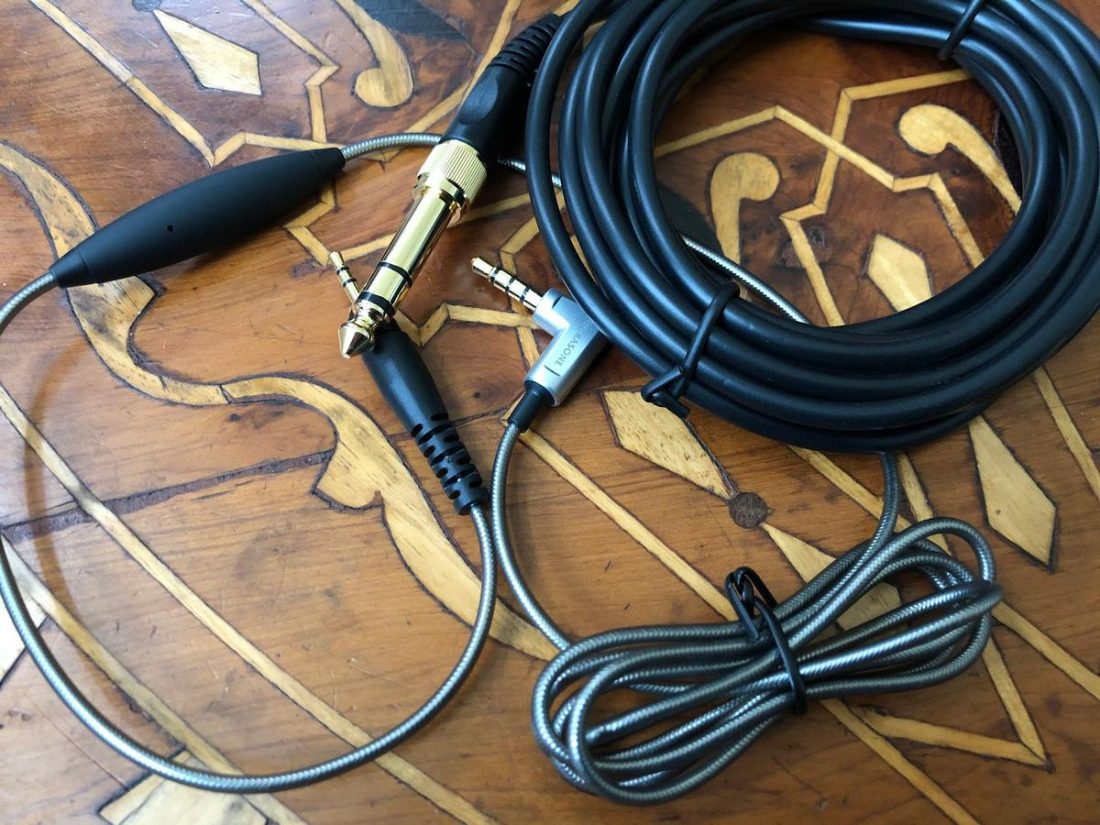
The thinner and shorter (1.2m) silver cable is a rubber-coated metallic weave, with microphone and play controls mid cable. The right-angle 3.5mm plug is metal (and quite nice) but on the other end is the identical plastic locking 2.5mm TRS plug as the long cable.
This short cable is a far more premium feeling cable than the longer one.
And dear readers, cables are where we run into ‘Trav’s concern number 2’. The 880 ear cups are plastic, hollow, and undamped. These empty shells become an issue due to the excessive amount of transmitted cable noise.
That long, black, plastic cable conducts a surprising amount of microphonic noise every time it’s touched, or when you move, or if a butterfly flaps its wings 2000 miles away. The empty headphone chamber serves all too well as the other end of the telephone in a children’s ‘Paper Cup Phone’ toy craft.
Design
The exterior design of the Performance 880 is smart and attractive. It seems that German manufacturers are quite good at using plastic to keep weight to a minimum and implement high-quality metal where strength is required.
Beautifully manufactured, hatch-marked metal cup extensions telescope into the plastic-covered band. Cups rotate a full 90 degrees to sit flat, revealing ULTRASONE’s DJ headphone lineage. The bottom half of the cups are a velvety finish plastic, while the top halves are comprised of thin metal, color-coded as per the different models in the Performance lineup (red, black, or titanium).
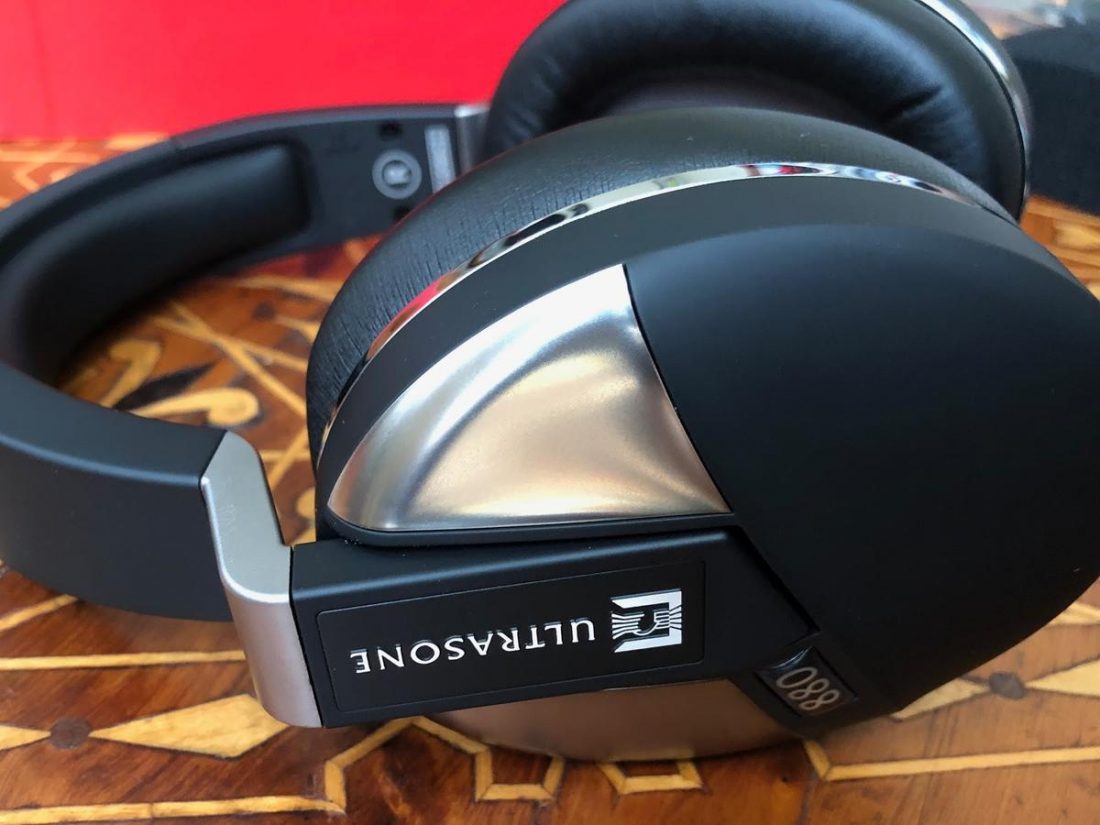
Although the general impression is mostly plastic, the fit and finish of the 880 feel very premium. The only niggle is the chrome-plated, shiny plastic used as a trim piece around the rim of the cups and for the ear pad/driver surface. It doesn’t match the titanium colored metal pieces, and this sort of plastic just always looks a bit… well… cheap.
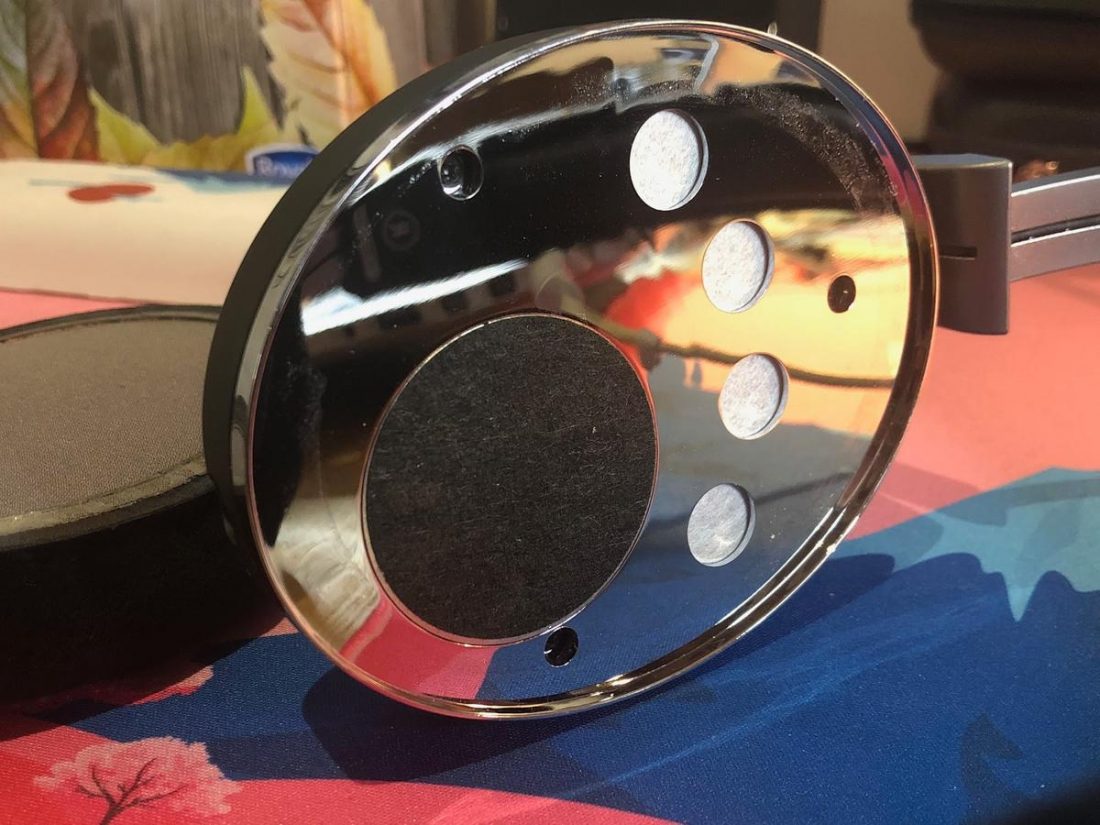
That being said, overall, the 880 feel and look terrific. They are solid, robust, and seem built to last, just like you’d expect from fine German craftsmanship.
Comfort
Right out of the box, the vice-like clamping pressure is a bit too much for my tastes. However, I’m not one to be dissuaded from applying firm but careful persuasion in the form of band bending, so dialing in my preferred level of clamp was easily achieved.
I find I like the 880 with a bit more clamp force than what I typically want from a pair of headphones, as once they go on, they stay put regardless of what I’m doing. The pads are sufficient to ensure that they remain comfortable, even when firmly attached to my head. Additionally, the passive external noise attenuation is quite good, and they block much of the surrounding noise.
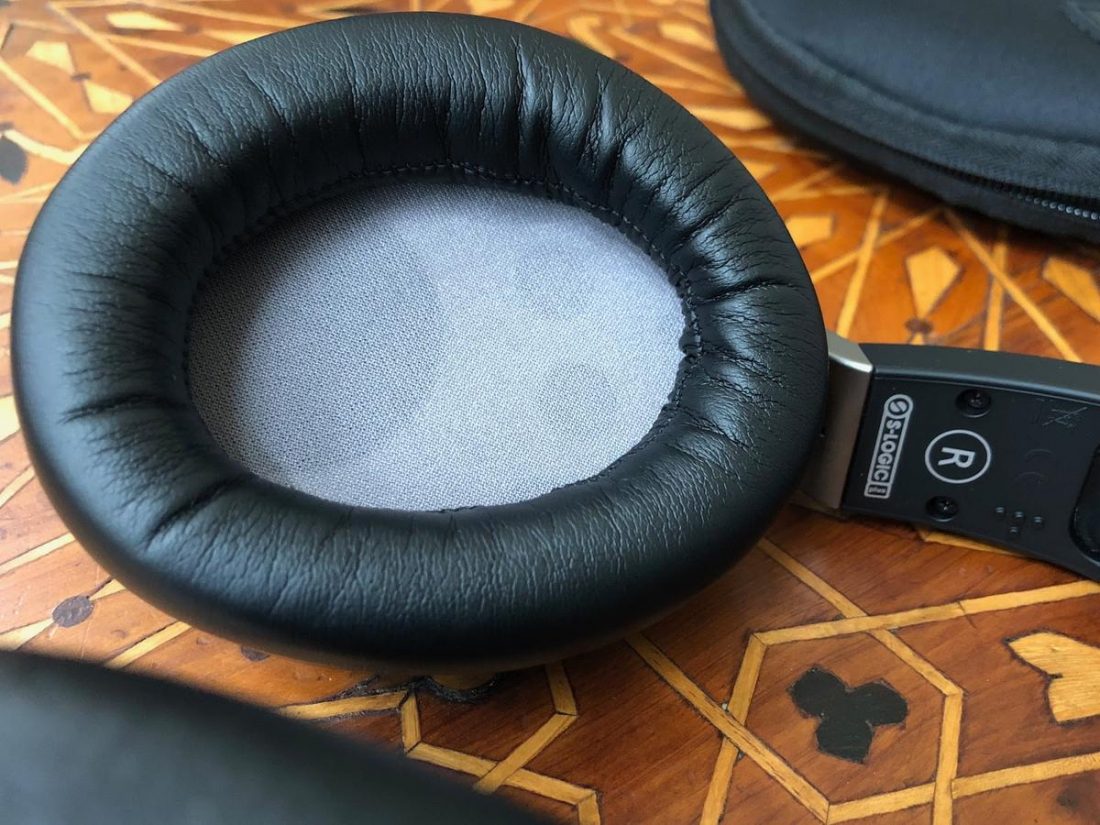
Intelligent material choice and effective use of plastics mean that the 880 are light (274g) for a pair of full-sized, over-ear, closed-back headphones. This helps greatly with comfort as the top pad on the band is only marginally padded.
What should be noted is that the ingenious band and cup design makes the 880 one of the most low-profile, full-sized headphones I’ve ever worn. I’m reluctantly getting used to how planar monstrosities (like the Audeze LCD series) look when worn, so a pair of headphones that sit snugly, with a head-hugging low profile, are a welcome treat.
Random strangers probably won’t stop to gawk, point, and take pictures of you if you wear them out in public. Probably.
Internals
The Performance 880 feature titanium coated 40mm dynamic drivers, which is the same size as other headphone staples like the Sennheiser HD6xx series. Titanium, while a premium coating, isn’t too overly exotic these days.
If ULTRASONE was like most other headphone manufacturers, we might finish right here. However, it’s the internal design and ULTRASONE’s unique driver configuration that set their headphones apart.
S-Logic
ULTRASONE’s patented S-Logic tuning, which they claim provides “unparalleled spatial reproduction,” is a complicated-sounding theory that ends up being quite simple in practice. The idea is to have the sound produced by the ear cup’s driver interact with the whole ear, rather than funneled directly down the ear canal.
ULTRASONE determined that by positioning the transducers slightly to the front and below the center of the ear, the “…sound hits the outer ear first, creating a spatial perception for all stereo sources by involving the anatomy of the ear – no additional electronics needed. This results in impressively natural sound, directions and distances are reproduced authentically without distortion.”
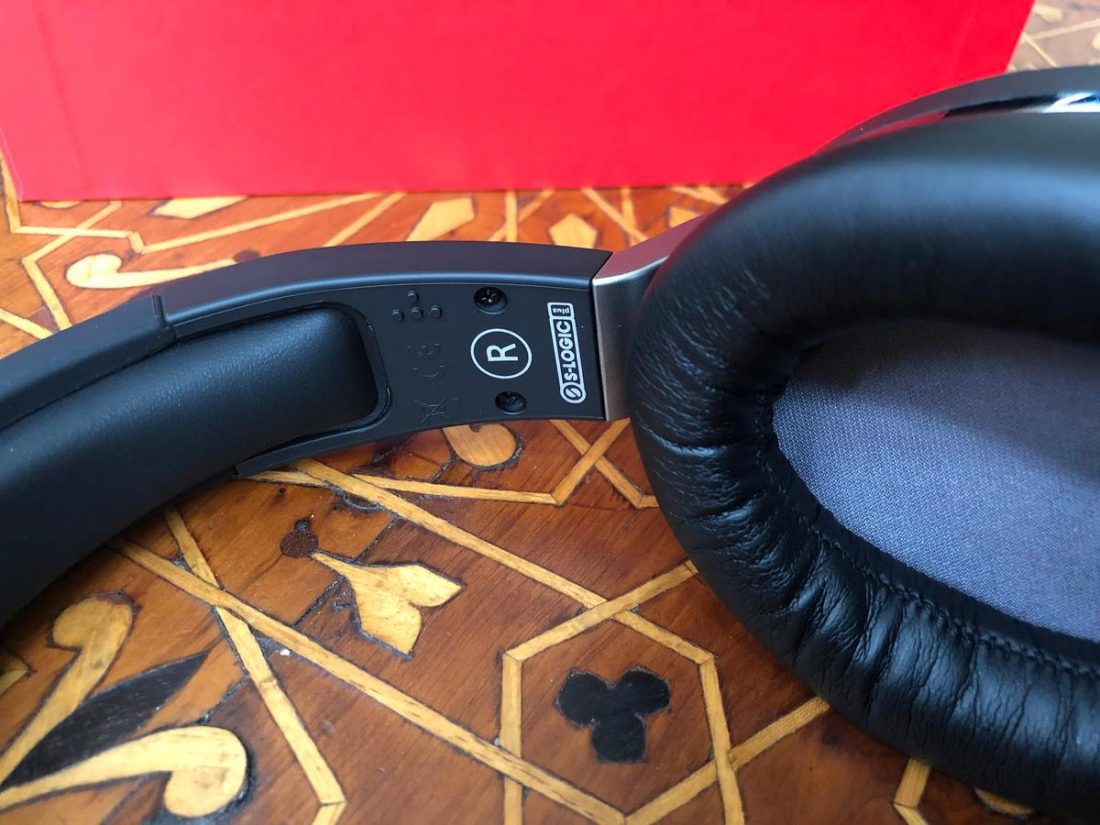
ULTRASONE also claims that this design protects the listener’s hearing and reduces fatigue by requiring 3-4 dB less sound pressure to achieve the same perceived volume. “That results in up to 40% less strain on your ears, drastically reducing the risk of hearing damage.”
Filled with curiosity and armed with only a small screwdriver, I bravely pried the #$!@%* ear pads (excuse me) off the cup surface (with my fingers not the screwdriver) and tackled the 3 small screws underneath. “Ah ha!” I thought. “Now I’m going to see what this high-tech, patented design is all about.”
Inside, I found a standard looking driver mounted to a relatively thin, chromed plastic plate. Sure, the driver mounts near the bottom, and there are four fairly large circular vents above it, but that’s it for the magic. An empty, plastic, undamped cup. No fancy chambers, waveguides, or do-dads. Nary a gizmo in sight.
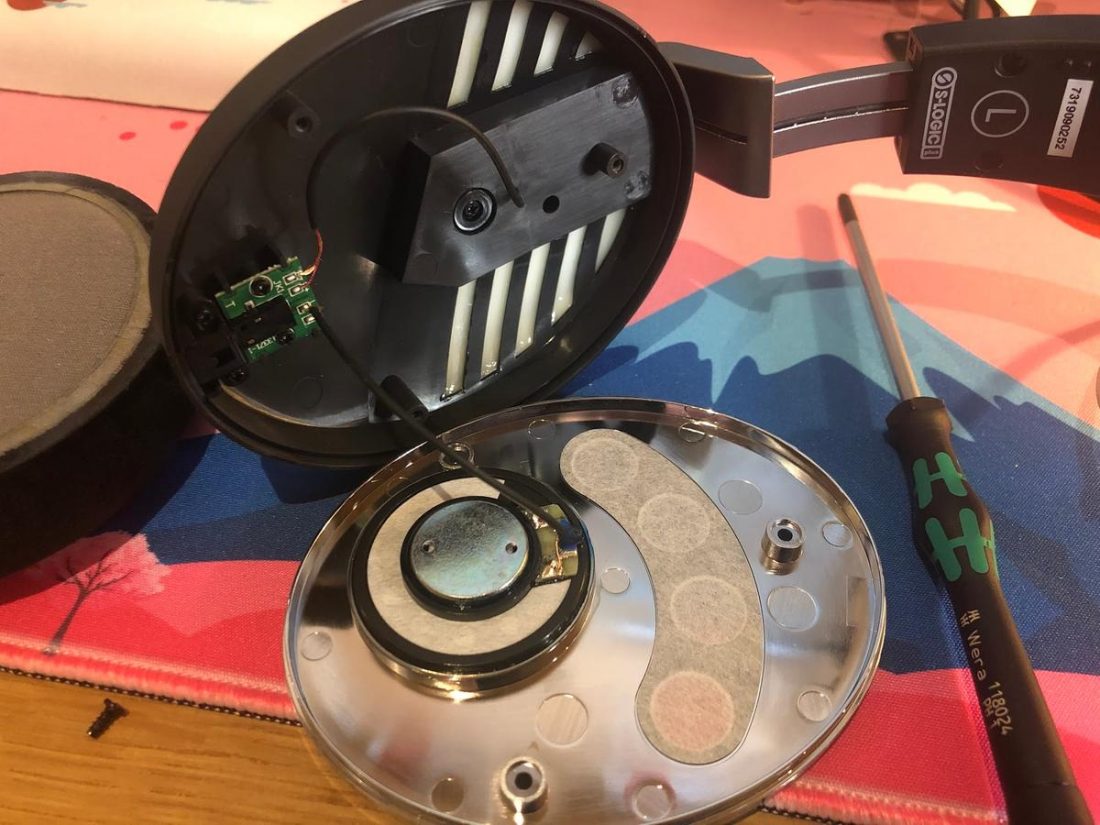
And this is S-Logic Plus! Plus is the upgraded version of S-Logic, and just below ULTRASONE’s premium S-LogicEX, which is available on higher-end models. ULTRASONE mentions that EX is “based on a funnel-shaped sound transducer arrangement, oriented downwards to the front.” Sometimes it’s all about how you market those design changes.
ULE
Additionally, ULTRASONE touts their headphones as ULE (Ultra Low Emission). This means they contain a protective shield for your ears, made from MU metal. ULTRASONE claims this protects the listener from the low-frequency magnetic fields created when an electrical signal is converted into sound by the driver.
Is this important? I have absolutely no idea. But I figure it can’t hurt to have less radiation in my life.
Bluetooth
Remember concern number 2 above (excessive cable noise)? Well, here’s the fix.
Hooray for Bluetooth!
Is the Sirius Bluetooth adapter a bit long in the tooth for a tech gadget? Sure, Bluetooth technology has improved over the years. The Sirius is only Bluetooth 4.1 and limited to a maximum quality of the aptX codec. No low latency or LDAC to be found here.
Will it only work with the Performance series? Yup. Expensive? Uh-huh. Proprietary charging cable (*eye-roll*)? Sigh. Yeah.
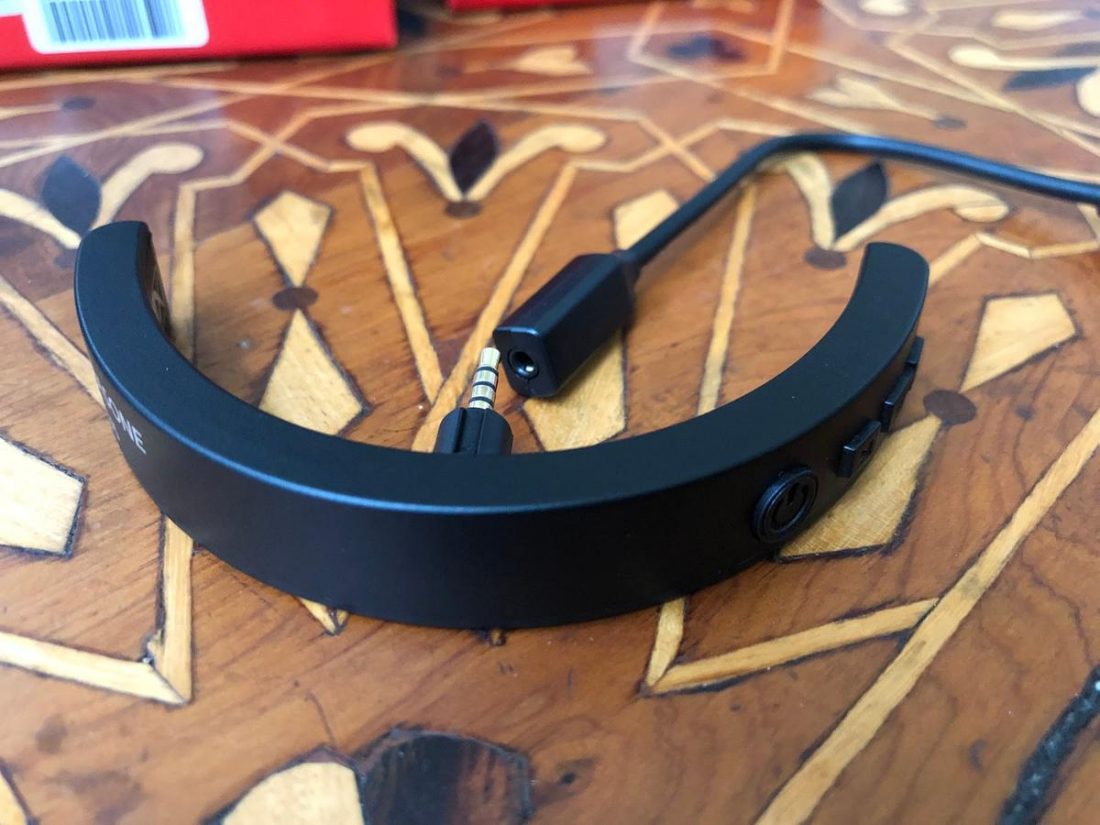
But I don’t care.
In my world, the Performance 880 are meant to be wireless headphones. They are very comfortable for long listening sessions. They look good when worn out and about. They block a lot of external noise. They stay on when doing things.
Convenience over ultimate sound quality is a tradeoff. No question. But it’s one that I’m happy to make in this case. Without giving it all away too early, I don’t think the Performance 880 are designed to be the ultimate, critical listening audiophile headphones. So, the slightly softer sound and potentially reduced detail obtained through a Bluetooth connection doesn’t really do them any harm.
The adapter fits snugly to the left cup and is held in by the 2.5mm jack. It features four physical buttons for power, play/pause, and volume up and volume down. It’s all high-grade plastic and incredibly light. It’s similar to but slimmer than the Hifiman Bluemini adapter for their Deva headphones.
And it works as it should.
I experienced no problems with disconnects or drops with the Sirius. Pairing is easy as long as you disconnect any previously paired devices. The Sirius drives the 880 plenty loud, and it sounds all but indistinguishable from the wired connection.
Performance 880 Sound
Like the cultured British valet that we all wish we have, the Performance 880 are unfailingly polite. Also, like our hypothetical manservant Jeeves, they are uniquely and distinctively voiced. Jeeves has solidity and character. And so do the 880.
ULTRASONE tends to have a reputation for creating bass-heavy headphones, and the 880 are no exception. They have a thick and weighty low end that is reasonably balanced by a clear midrange and good treble response. All that bass warmth colors the sound to feel smooth and comfortable.
I first measured the frequency response with the protein leather pads installed. Then I did it again to make sure I hadn’t done anything wrong. Next, I found a pair of Sennheiser headphones and measured them to make sure nothing was malfunctioning.
I’ve never seen a frequency graph quite like the one that the 880 yield. I seriously thought something was wrong with my measurement rig. Once reassured that all was well, I took a hard look at the 880’s frequency graph.
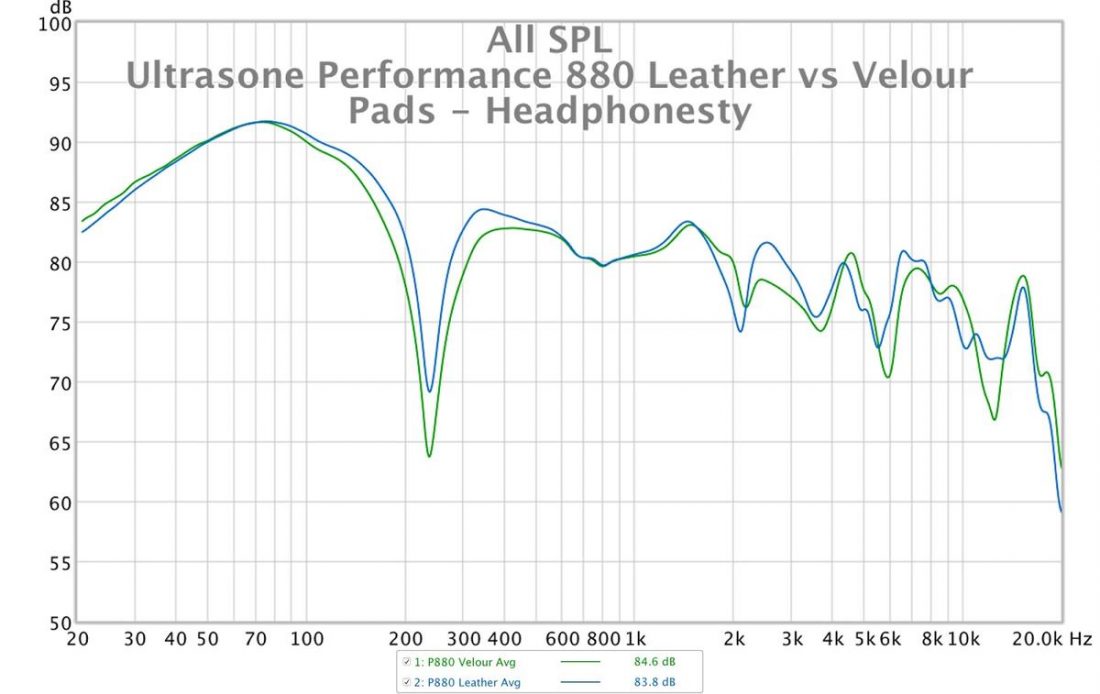
A big bass peak at around 60-80 Hz, followed by an absolute trough around 240 Hz, peaking again around 350 Hz with a gradual down slope with some peaks, as it moves higher along the frequency spectrum. Ok. So, we can infer that the 880 like 60 Hz bass frequencies, absolutely refuse to play anything between 200-300 Hz, and are basically all over the map above that. Hrmmm.
Next, I measured the velour pads to see what difference they make to the sound. More or less the same up to about 800 Hz and slightly less treble energy above 2 kHz.
Now it may surprise you (as much as it did for me) that it turns out that the 880 actually sound good and that they have a lot to offer.
The 880 are SO non-fatiguing. Is this a result of S-Logic or ULE design and technology? Their unique frequency tuning? I don’t know for sure, but whatever it is, it works.
In addition to being great for commuting, the 880 could be the ultimate pair of office headphones. Often folks rely on active noise canceling to block out unwanted coworkers and general commotion, but the 880’s passive isolation is up to the task. And that’s without the odd feeling of pressure, hiss, and compromised sound quality that active noise cancelling can create.
Light weight? Check. Comfortable for long periods? Check. Sufficiently good looking to wear in public? Check.
It also helps that the 880 are tuned in such a way to let you groove along but still pay attention to what you are doing. Some headphones grab you by the ears and demand that you pay attention to them, and only to them. I can’t get work done when I’m wearing those sorts of cans.
Now I admit to being somewhat underwhelmed when I first popped the 880 on my head, especially with that darn microphonic cable. They did not immediately jump out to me as being sonic superstars, but the more I use them, the more I appreciate what they have to offer. Give them time, embrace their strengths, and they will win you over.
The soundstage is reasonably wide for closed-back headphones, which makes sense if S-Logic does what it is intended to do. No, you aren’t instantly transported to a surround sound theatre, but neither is it a closed-in, center-of-the-head experience.
I owned an older pair of ULTRASONE Pro 550 headphones, and I’ll admit, I didn’t see (or hear) the allure. Their sound didn’t appeal to me. Their off-beat tuning took me out of the music, and I always thought something in the midrange sounded off. While I no longer have the Pro 550 on hand to directly compare to the 880, I’m confident that the 880 are by far sonically superior.
The 880 sound much more natural and realistic.
Bass
The Performance 880 are generally thick and lush. Their sound is relatively heavy and smooth, with an abundance of upper bass that rounds off the listening experience. With pop tracks like Lizzo’s Juice, the beat is quite punchy and controlled but remarkably doesn’t diminish the clarity of the vocals. Dangerous by the XX has a rolling multi-textured bass line that the 880 interpret and transform into an immersive euphonic experience.
It’s not the absolute cleanest or most controlled low-end, but at reasonable listening levels, things remain in control and nothing devolves into a bloated or boomy mush.
The sound is somewhat reminiscent of using the loudness switch available on some stereo gear (especially vintage amplifiers and receivers). This circuit is designed to add a bit of low-end oomph when listening at low volume levels. This sort of design works in this case just as well, with the 880 sounding equally as good at a lower than normal listening intensity.
However, just like some of those ‘loudness’ implementations that don’t reduce as the volume is turned up, the bass does tend towards distortion as you crank them up (albeit to levels much beyond what I enjoy or regard as safe).
As might be expected, the velour ear pads do seem to somewhat lessen the bass intensity. This is beneficial as it helps to make the 880 sound more balanced.
Midrange
The midrange is notably clean and clear, with vocals slightly recessed behind the higher and lower energy. I keep expecting that the hefty low end should strongly color the 880’s mids, but they remain remarkably natural with only a slight tendency towards being warm.
Clarity remains respectable, even at lower listening levels, allowing for an enjoyable experience at a reduced volume. Whether it be driver break-in or ear acclimation at work, I now find the midrange less recessed and to have more presence than my first impressions led me to believe.
Treble
There may be a bit of extra energy in the lower treble frequencies that can cause cymbals to sound a little splashy. However, it’s a worthwhile compromise as the treble does a good job at providing ‘balance to the force’ (of the low end).
The 880 are not the embodiment of analytical and detail-focused headphones. They provide enough airiness to convey decent resolution and energy, but their strength really lies in how inoffensive they are.
Sing me another song Jeeves, I love to listen to your voice.
Too bombastic to be considered cultured, but far too polite to ever be brash. Jeeves may wear a tuxedo every day, but you are pretty sure he’s covered in cool tattoos under there somewhere.
The 880 are fun, but they remain a polite, laid-back and non-fatiguing listen. Lots of low-end thump, but they are content to take a back seat to daily life when you have them on and are active. The Performance 880 don’t demand a lot of the listener. They are like donning a weighted, warm, and comfortable blanket separating you from the outside world.
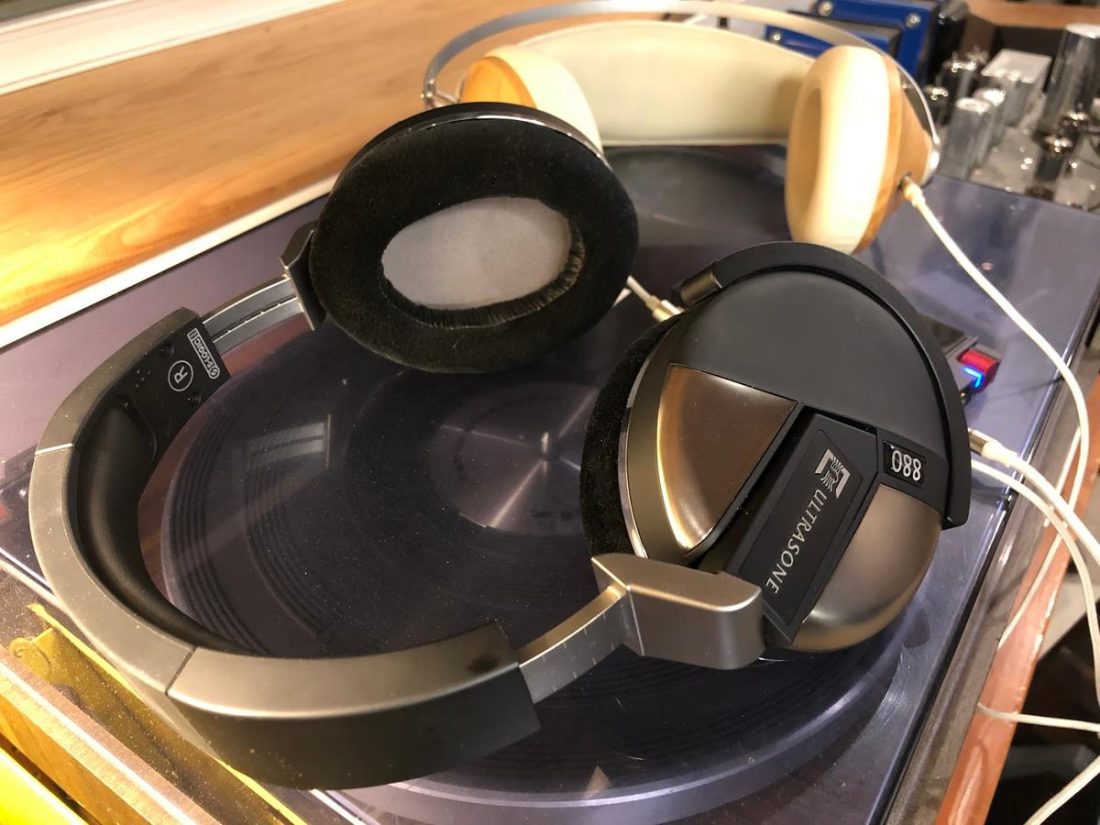
Comparisons
I don’t have many similar headphones on hand to compare directly to the 880. My best option is the Meze 99 Classics, another prominent bass pair of closed-back headphones. Since I’m sold on using the 880 via Sirius, I paired the 99 Classics with the xDuoo XP-2Pro Bluetooth DAC/amp for my comparison in an attempt to even the playing field.
Overall the 880 give the impression of having a more significant lower-bass response. Their sound is thicker and weightier than the 99 Classics. The presentation is larger, more lush, and richer sounding.
The 99 Classics are lighter sounding with more high-end energy and clarity. This isn’t to say that the 880 sound muddy. (They do not.) However, the midrange is more prominent on the 99 Classics, producing a bit more nasally character in direct comparison.
The 99 Classics do sound more closed in, narrower than the 880, and have more tendency towards the classic closed-back sound signature, with a smaller soundstage and more focused performance.
Where to Buy
Conclusion
The Performance 880 aren’t your standard closed-back, v-shaped headphone. Turns out that the rebels at ULTRASONE may be onto something with their proprietary technology. They’ve managed to create an unusual amount of width and space in the sound, making the 880 immersive and encompassing to listen to.
If you are shopping for a pair of full-sized cans for commuting or office use, these really deserve to be on your radar. You can likely get away with jogging with them if you really want to.
The 880 hold well, are comfortable for the long haul, provide good isolation, and let you turn down the music to let you concentrate on your activity, work or play. They even look good when doing so, with an understated and classy design.
The 880 aren’t without their odd design choices, which some less generous folks may consider flaws. The microphonic cable and cup interaction are surprisingly distracting. There has to be a better way than using adhesive for ear pad mounting. And that chromed plastic has got to go.
Should we talk about those measurement graphs?
But what’s important is how they sound. Not how they measure. By the measurements, these should sound a whole lot more different than they do. Clearly, ULTRASONE’s S-Logic and ULE aren’t tuned to churn out perfect graphs. Yet, they seem to deliver on what they promise. A wide and immersive soundstage. Clarity and presence at lower than usual volume. A rich and full sound, without fatigue.
The ULTRASONE Performance 880 aren’t the right headphones for everyone in every situation, but I’m betting they are the perfect headphones for some.

Hi guys. I bought Ultrasone 880 second hand with Sirius adapter and 2 cables. Pardon my ignorance, but how do you charge the bloody thing.
Thanks
I bought Ultrasone Performance 880 and the sound became distorted and muffled after only several days of (normal) listening, it seems that the driver is of very bad quality. I will avoid this brand in the future.
I’m sorry to hear that! I’ve not run into issues myself or heard that there are widespread issues.